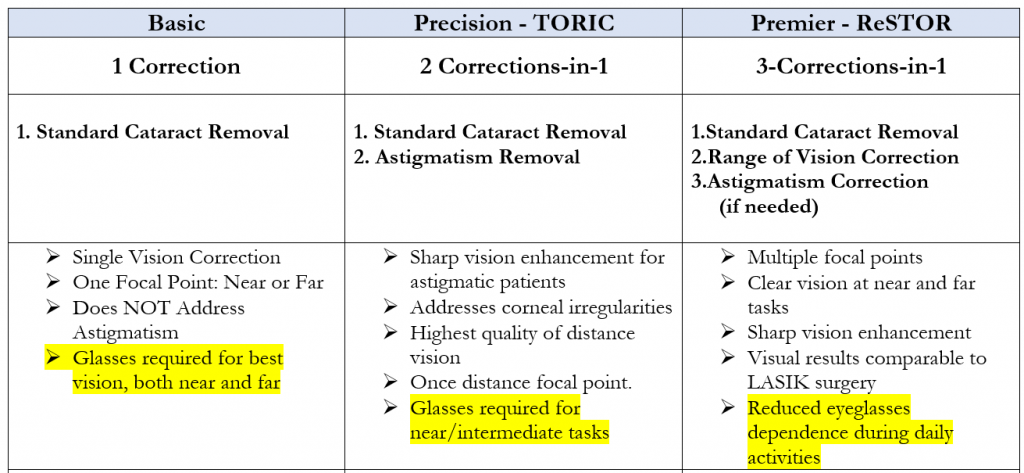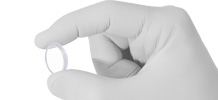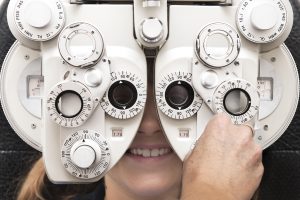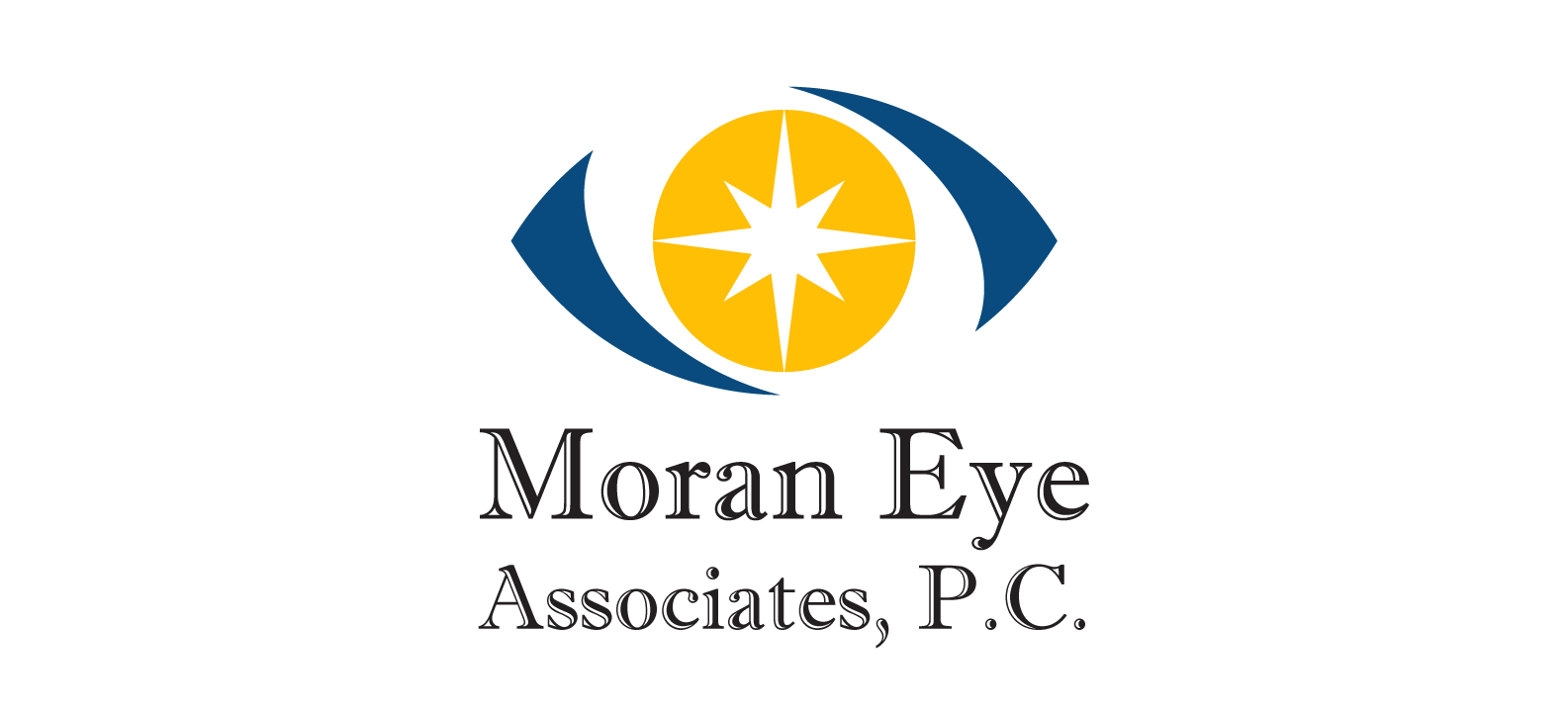by Dr. M | Feb 19, 2019 | Appointment, Conjunctivitis, Medical Eye Care, Patient Care
Irritated, runny eyes…it is Pink Eye?
If you or your children have an inflammation in the eye, it could be pink eye. The medical term for pink eye is Conjunctivitis, an inflammation of the thin, clear covering of the outermost layer of the eye and the inside of the eyelids.

Red, irritated eyes could be pink eye.
There are three different types of conjunctivitis: Viral, Bacterial and Allergic.
The treatment for each condition varies, so if you have an inflamed eye, make an appointment so our doctors can prescribe the specific treatment that will give you relief. Conjunctivitis is very common and easily treated, so don’t suffer, call for an appointment when symptoms begin.
VIRAL CONJUNCTIVITIS: If it’s viral conjunctivitis, it usually affects one eye. Because it is a virus, it is contagious, and can easily spread to your other eye. You may experience a light discharge, excessive watering, itching and crusting on the eyelids. Viral conjunctivitis cannot be treated with antibiotics.
BACTERIAL CONJUNCTIVITIS: If your inflamed eye has a heavy yellow or green discharge with crusting on the lids, you may have bacterial conjunctivitis. This type of conjunctivitis easily spreads to both eyes. It is important to start antibiotic eye drops as soon as you start to have symptoms. Be careful wiping your eyes, use a clean tissue or gauze for each eye.
ALLERGIC CONJUNCTIVITIS: Itching, redness, tearing and eyelid swelling are all signs of allergic conjunctivitis. This condition is often accompanied by other signs of allergies, like a stuffy, itchy and runny nose. It’s not contagious since it is caused by dust or allergens. Artificial tears, antihistamine eye drops, and medication can help relieve the symptoms.
For ALL types of eye inflammations, practice good hygiene. Assume that the condition is contagious until told otherwise.
- WASH your hands frequently
- STOP wearing contacts
- THROW AWAY your old contact case
- WASH your pillowcase
- DISCARD old eye makeup
Warm compresses will give you relief from Viral, Bacterial and Allergic conjunctivitis. Good hygiene practices are essential!
If you have questions about pink eye or any other eye condition, don’t hesitate to contact our office at 610-628-2022.
by Dr. M | Feb 11, 2019 | Contact Lenses, Education, Exam, Experience, Eye Safety, Procedure

What is a Stye?

Styes develop along the lash line.
A stye is a painful swollen spot in the upper or lower eyelid, near the lash line. The stye develops due to an infection in the eyelash follicles or oil glands at the lid margin.
The inflamed area may be tender to the touch. It appears as a red bump, possibly with a yellowish spot where pus has collected, like a pimple. It can occur on both the upper and lower eyelid, and is common in both children and adults. Styes develop gradually and sometimes go away on their own.
Home Care: What should I do if I feel a stye developing?
- Apply warm moist compresses 10 minutes 4 times a day.
- Keep your eyelids clean. Use warm water and baby shampoo on a cotton ball.
- STOP wearing eye makeup. Covering up a stye may slow your healing.
- Don’t wear contacts. Wear your glasses until the stye is gone.
- Wash your hands! Keep your hands clean and don’t share washcloths or towels with others.
- Do NOT Squeeze! Styes should not be squeezed or punctured at home.
When should I see the doctor?
If the stye is painful, causes vision problems, or does not improve after a few days, call for an appointment. You may need medication to treat the infection. When in doubt, pick up the phone and give us a call. We are always willing to discuss your symptoms and bring you in to the office if needed.
After your eye is healed, it is important to replace all of your eye makeup that has come in contact with your infected eye. That includes eyeliner, mascara, concealer and eye pencils.
Is there any way to prevent a stye?
A stye develops due to a blocked pore, so it makes sense that keeping your eyelids clean is the best way to prevent styes. Don’t sleep in your makeup! Take the time to remove ALL makeup before you go to bed each night. Replace your eye makeup every six months, and don’t share it with others.
Cleanse your eyelids in the morning as well to keep the lid margins clear. The crusty discharge that accumulates overnight in the corners and on the lashes should be cleared away with the warm water and baby shampoo method.
To read more about keeping your eyes healthy…scroll through the Moran Eye Associates blog. You’ll find helpful information on eye care from our doctors and staff.
by Dr. M | Jan 31, 2019 | Cataracts, Cornea, Cost, Diabetes, Education, Exam, Eyeglasses, Medical Eye Care, Procedure, Surgery
When it is time for cataract surgery, you have choices to make that will determine your future vision.
During cataract surgery, Dr. Moran will remove the cloudy lens of your eye and replace it with a clear Intraocular Lens (IOL). Patients have the option to choose from different types of IOLs for their surgery.

Intraocular lens implant
While all the IOLs offer improved vision, there are some lens choices that offer additional features, such as astigmatism correction, and vision at fixed points of focus – near, intermediate and far vision. Dr. Moran will discuss these lens choices with you. He will explain which option(s) are right for you, taking into consideration the health of your eye and your visual needs after surgery.
The chart below compares the features of the IOLs.

The Basic lens offers 1 area of correction, and may be covered by your insurance. This lens offers clearer vision at one point of focus either distance or near. For patients who don’t mind wearing glasses, this lens is a good option.
The Toric and ReSTOR lenses do more, so there is additional cost for these lenses. Insurance does not cover the cost of these lenses, since they are considered advanced technology lenses. These lenses are special order for you, so payment for these lenses is due one week prior to the surgery date.
The Toric lens corrects one point of focus, either distance or near, and corrects for astigmatism, which is an irregular shape of the cornea. Patients with a corneal astigmatism greater than 1.25 diopters are good candidates for this lens.
The ReSTOR lens offers multiple points of focus. This lens is designed with concentric circles, each with a specific prescription power. Your eye will be able to focus using the right power ring in the lens. ReSTOR lenses are recommended for patients who have healthy eyes, and who are having surgery on both eyes done within a few weeks of each other.
More information about cataract surgery and your IOL choices will be discussed at your cataract evaluation appointment with Dr. Moran, and again with our surgery coordinator at your scheduling/measurement appointment. We encourage all patients to check with their insurance company before their cataract surgery to find out specifics about what is covered under their plan. Some plans have co-pays and deductibles that may affect the amount that the patient will have to pay.
Click to read more about Cataracts
by Dr. M | Jan 30, 2019 | Contact Lenses, Cornea, Education

Contact Lens Solution
The largest risk of infection for contact wearers comes from improper use and handling of the contact lenses.
Contact lenses are convenient, comfortable and simple-to-use. It’s easy to forget that they are medical devices that need to be carefully used and stored – free from bacteria, dirt and germs.
Are you at risk for infection?
Almost one million cases of eye infections due to contact lens misuse were reported in the U.S. in just one year. Misuse can be due to many reasons, including wearing your lenses too long, not following prescribed wearing schedules, sleeping in your lenses, and not cleaning your lenses properly.
The Center for Disease Control reports that 99% of contact lens wearers have worn, washed or stored their lenses in unhygienic ways. If you have bad contact lens habits, it’s time to change, and follow the rules we’ve outlined for you.
 ALWAYS follow these 6 simple rules to prevent infection
ALWAYS follow these 6 simple rules to prevent infection
1. Wash your hands with soap and water before handling your contact lenses…EVERYTIME!
2. Take out your lenses before showering, swimming and sleeping (naps & overnight).
3. Rub your lenses with disinfecting contact lens solution after you remove them. Don’t use water to clean your lenses!
4. Use fresh solution every time you store your lenses. Never add clean solution to “top off” old solution.
5. Replace your contacts as directed…don’t wear two week contacts for 30 days! Wearing your contacts past the recommended usage date can cause bacteria and germs to accumulate. The lenses may tear or deteriorate after prolonged use. When in doubt, throw them out!
6. Keep your contact case clean, rinse with disinfecting contact lens solution and let dry completely! A dirty contact lens case can be a breeding ground for bacteria. Replace your contact lens case every 3 months.
Why do you need to follow these rules?
Contact lens infections (keratitis) can be painful, and in the worst case scenario, can cause permanent scarring and even blindness. If you have developed bad lens wearing habits, stop now!
No sleeping in contacts. No swimming or showering in contacts. No dirty contact cases.
Questions? Dr. Bianca Tang is our contact lens expert. Let her work with you to find the best lenses and the best fit to give you the vision you’ve been looking for. Fill out the form to the right to contact our office for an appointment, or call us at 610-628-2022.
by Dr. M | Jan 14, 2019 | Donate, Education, Experience, Fun Stuff, News, Office

Congratulations to Jagger Bolton, Eagle Scout!
Jagger Bolton, Mandy’s son, started with scouting at age seven with Troop 58 in Slatington, nine years later, he earned the rank of Eagle Scout. Jagger’s Eagle Scout project was to rejuvenate the fish pond outside of the Springside Fish Hatchery in Slatington.
PA State Representative Zachary Mako was on hand to recognize Jagger’s achievement with a special commendation from the State of Pennsylvania. Family and friends were all on hand to congratulate Jagger at his Eagle Scout ceremony.
-

-
Jagger’s Family
-

-
Jagger receives state commendation
-

-
Featured news about Jagger’s achievement
-

-
The finished project!
-

-
Thanks to all who helped contribute
-

-
Jagger at work
The renovation project took months to complete. The first step was to remove all of the fish from the hatchery, transferring them to local creeks. After the fish were relocated, he began work on the fish pond itself. The project included repair and painting of the fence, beautification of the landscaping and installing a new bench so local residents could enjoy the view.
A project on this scale was not possible without the help of the community. Jagger acknowledges the generosity of area businesses who donated items or gave discounts for supplies and equipment.
Jagger also wants to thank his friends and family who donated their time and energy. They persevered through a rainy summer to get it all done. From spreading mulch to preparing meals for the volunteers, Jagger’s crew made it all possible.



by Dr. M | Jan 8, 2019 | Cataracts, Cornea, Dry Eye, Exam, Experience, Medical Eye Care, Procedure, Vision
Corneal Therapy offers Successful Healing
Moran Eye Associates’ Dr. Bianca Tang recently used an innovative treatment to help a patient’s cornea heal faster and more effectively. This treatment promotes healing using amniotic membranes suspended in a ring that sits on the eye like a contact lens.

Prokera Corneal Treatment
The patient had been using prescription drop therapy over a period of months to help with a painful area of corneal thinning, but her eye wasn’t getting better. She was in pain, and and she was having cloudy vision. She was over 80 years old, and had other health issues that caused slower healing.
What did the patient think of the process?
“Dr. Tang recommended a new procedure that cured my cornea erosion issue. It was a stem cell lens that aided healing of the cornea. I now have my sight back in both eyes with no pain. Thank you so much for using this new procedure. It worked like a charm.”
The treatment Dr. Tang recommended was Prokera. The amniotic membranes in Prokera are safe, promote new cell growth, and prevent the development of scar tissue. The membrane itself dissolves after one week, and the doctor removes the ring following treatment.
Dr. Tang’s response to the results.
“The outcome was even better than I could have imagined. The area of epithelial defect that covered almost a quarter of her cornea was completely resolved. The most rewarding part of this treatment is knowing that the patient was no longer in pain, and that her vision was much improved.”

Prokera Corneal Treatment
Studies show that using amniotic membranes:
- Reduces pain
- Reduces inflammation
- Reduces Scar Formation
- Introduces essential factors for new cell growth
Whether managing disease, trauma, or post-operative care, healing of the ocular surface is essential to patients’ comfort and vision.
At Moran Eye Associates, our doctors offer excellent care that is personalized, innovative and effective. You can depend on us for all of your eye care needs for your entire family.
by Dr. M | Jan 3, 2019 | Appointment, Diabetes, Dilation, Exam, Glaucoma, Low Vision, Macula, Mark Moran, Medical Eye Care, Patient Care, Retina
Your annual eye exam offers a look at more than just your vision.
You may have heard that the eyes are the windows to your soul, but did you know that they provide a look at your overall health as well.
Your dilated eye is an open window where blood vessels and nerves can be clearly seen. The view through the open pupil is a unique means of detecting health issues including:
Your eye doctor may be the first to alert you to developing health problems.The American Optometric Society reported that in just one year, over 250,000 patients were diagnosed with diabetes after their optometrists reported concerns. Early diagnosis and treatment are vital for the health and vision of diabetic patients.
Changes or fluctuation in your vision may also be an indicator of a larger health problem. Report blurred vision to your eye doctor, it may be a sign of increased blood sugar levels and the need for medical treatment.
Uncontrolled diabetes can have severe consequences. Loss of vision due to diabetic retinopathy is a primary concern. Diabetes is the leading cause of blindness in people under the age of 74, so a regular schedule of dilated eye exams are important for diabetic patients. If you know someone who is diabetic,or has a family history of the disease, make sure that they are getting the eye care that they need.
Our goal is to keep you healthy!
Dr. Moran and Dr. Tang not only provide excellent vision care, they are essential partners for your general health and well-being. If you are overdue for a vision exam, don’t delay. Call us to schedule your appointment, Monday through Friday from 8 am to 4 pm.
For a video of a dilated eye exam, click here National Eye Institute Dilated Eye Exam
by Dr. M | Dec 27, 2018 | Cataracts, Contact Lenses, Diabetes, Dry Eye, Eye Safety, Eyeglasses, Floaters, Glasses, Glaucoma, LASIK, Low Vision, Macula, Procedure, Retina, Surgery, Vision
A patient asked the other day, “Do you do regular eye exams?”
Of course we do! At Moran Eye Associates we offer Complete Eye Care, which includes Vision, Medical and Surgical services.

Better 1 or 2?
VISION: We accept VSP & NVA
- Routine Eye Exams
- Contact Lenses: Traditional & Specialty Lenses
MEDICAL: We accept most medical insurancessisipisi.ccsisipisi.ccsisipisi.ccsisipisi.cc
- Diabetic Eye Care: Diabetic Retinopathy
- Glaucoma Care: Medical and Surgical Treatment Options
- Macular Degeneration
- Dry Eye Treatment: Diagnostic Services & Thermal Therapy
- Eye Emergencies
- Infection/Inflammation
- Low Vision Services
SURGICAL: Dr. Moran does surgery at the Surgery Center of Allentown, Sightpath LASIK Center in Bethlehem, as well as some procedures in our Delaware Avenue office.
- Cataracts
- LASIK
- PRK
- Laser Floater Removal
- Glaucoma Eye Surgery
- Foreign Body Removal
- Eye Lid Surgery
Please contact our office if you need an appointment for your eye care. Call or text us at 610-628-2022, or send us an email by filling out the form on the right!
by Dr. M | Dec 5, 2018 | Diabetes, Dilation, Education, Exam, Eyeglasses, Floaters, Glasses, Medical Eye Care, News, Office, Patient Care, Retina, Uncategorized, Vision
How does Diabetes affect your eyes?

Diabetics need to see their eye doctor at least once a year.
Diabetes can cause damage to the blood vessels that supply the retina. These damaged blood vessels may leak, swell or bleed causing problems with your vision. Diabetes can also increase the growth of cataracts, and increase your risk of glaucoma. Changes in your blood sugar can cause blurriness in your vision, and fluctuations to your glasses prescription.
What is the best way to keep my eyes healthy?
Annual eye exams are important, because left untreated, diabetic retinopathy can worsen, and lead to blindness. Patients with uncontrolled blood sugar are at a higher risk for problems, but even patients who control their diabetes can develop issues.
Are there warning signs of diabetic eye disease?
Whether you are diabetic or not, if you notice any changes to your vision, you should see your doctor as soon as possible. If you notice a change in prescription, any cloudiness, blind spots or increased floaters in your vision, you should see your eye doctor.
Will controlling my blood sugar help my vision?
Yes. Swings in your blood sugar readings can cause changes to your vision. High blood sugar can cause swelling in the eye, which can affect your vision. If your blood sugar fluctuates, your vision will fluctuate too, and you may find that your glasses don’t work effectively.
Is there a way to treat diabetic retinopathy?
There are different options for treating diabetic retinopathy. Dr. Moran and Dr. Tang can discuss which options are best for your needs. There laser treatments which target the damaged vessels, as well as medications which can help preserve your vision.
If you are Diabetic, Annual Vision Exams are a MUST!
Diabetics have special needs when it comes to taking care of their eyesight. With a dilated exam, your doctor can detect and begin to treat diabetic eye disease before you notice any vision changes. Your annual exam allows our doctors to check for early onset cataracts and glaucoma.
If you (or someone you care about) has diabetes, make sure to connect with the trusted eye care team at Moran Eye Associates.
Call our office to schedule an appointment 610-628-2022.
by Dr. M | Nov 29, 2018 | Contact Lenses, Education, Exam, Experience, Fun Stuff, Glasses, Vision
Follow us on Instagram!
When you follow Moran Eye Associates on Instagram, you’ll see office news, cool eye information, and other fun stuff! You might even learn a little something too! https://www.instagram.com/moraneye








 ALWAYS follow these 6 simple rules to prevent infection
ALWAYS follow these 6 simple rules to prevent infection












